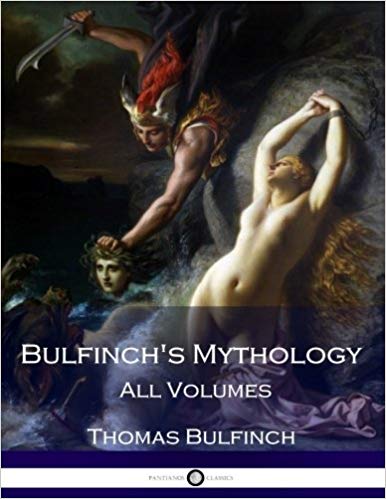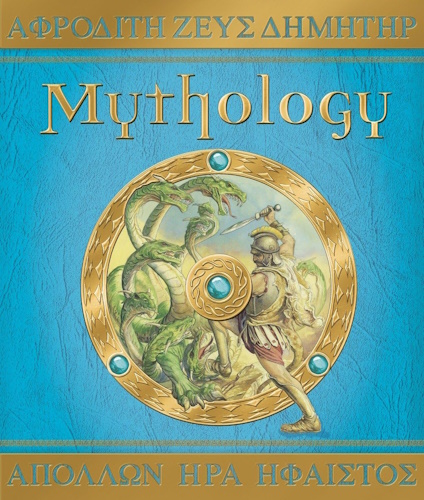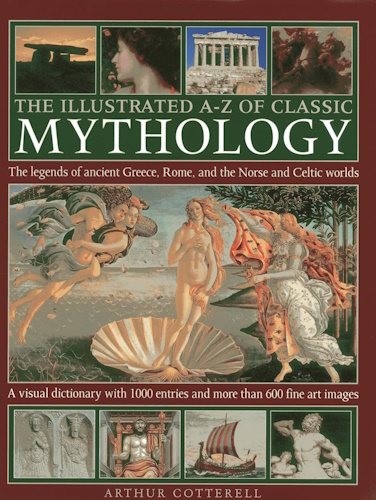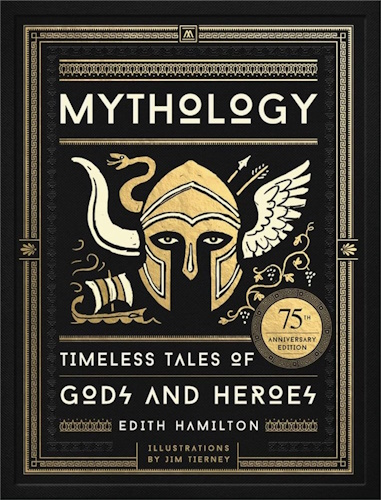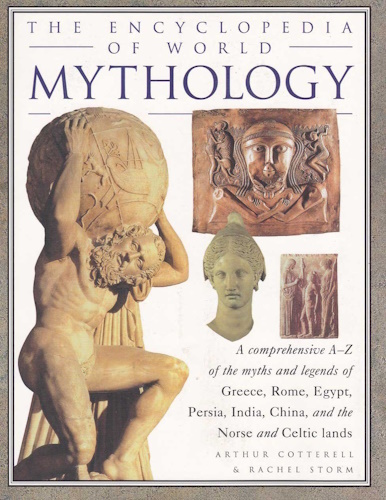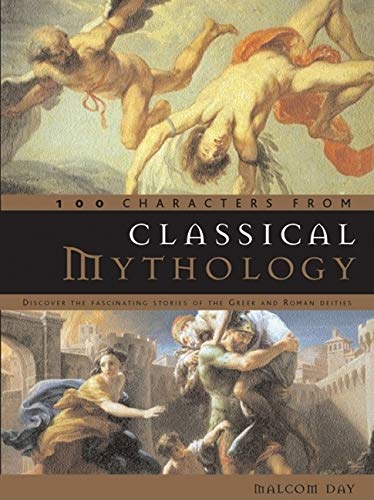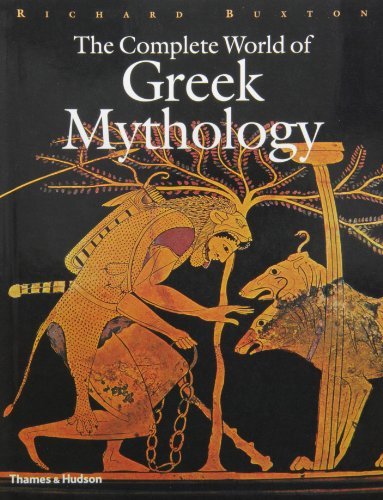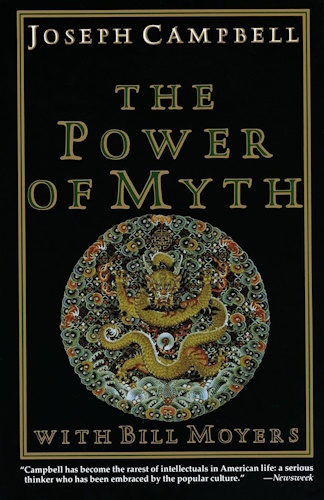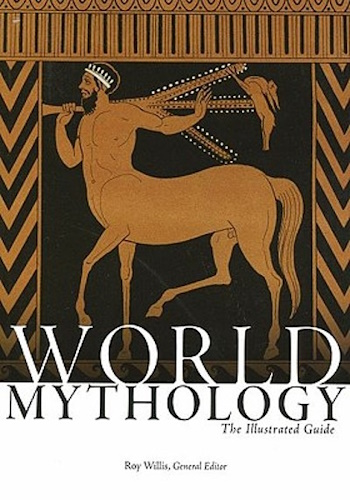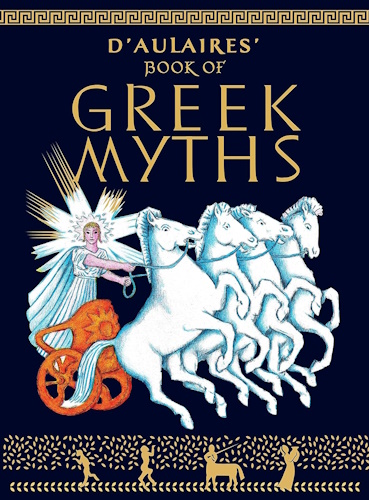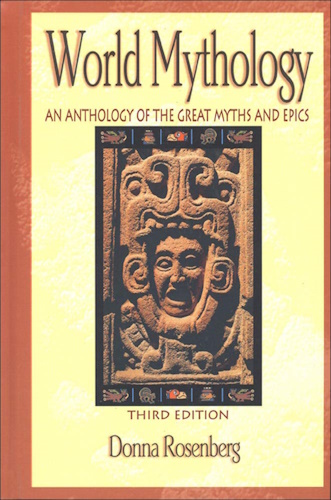
![]()
![]()
Part I.
King Arthur and His Knights.
Chapter XII.
The Story of Sir Tristram of Lyonesse.
SIR TRISTRAM rode through a forest, and saw ten men fighting, and one man did battle against nine. So he rode to the knights and cried to them, bidding them cease their battle, for they did themselves great shame, so many knights to fight against one. Then answered the master of the knights (his name was Sir Breuse sans Pitie, who was at that time the most villainous knight living): "Sir knight, what have ye to do to meddle with us? If ye be wise, depart on your way as you came, for this knight shall not escape us." "That were pity," said Sir Tristram, "that so good a knight should be slain so cowardly; therefore I warn you I will succor him with all my puissance."
Then Sir Tristram alighted off his horse, because they were on foot, that they should not slay his horse. And he smote on the right hand and on the left so vigorously, that well-nigh at every stroke he struck down a knight. At last they fled, with Breuse sans Pitie, into the tower, and shut Sir Tristram without the gate. Then Sir Tristram returned back to the rescued knight, and found him sitting under a tree, sore wounded. "Fair knight," said he, "how is it with you?" "Sir knight," said Sir Palamedes, for he it was, "I thank you for your great goodness, for ye have rescued me from death." "What is your name?" said Sir Tristram. He said, "My name is Sir Palamedes." "Say ye so?" said Sir Tristram; "now know that thou art the man in the world that I most hate; therefore make thee ready, for I will do battle with thee." "What is your name?" said Sir Palamedes. "My name is Sir Tristram, your mortal enemy." "It may be so," said Sir Palamedes; "but you have done overmuch for me this day, that I should fight with you. Moreover, it will be no honor for you to have to do with me, for you are fresh and I am wounded. Therefore, if you will needs have to do with me, assign me a day, and I shall meet you without fail." "You say well," said Sir Tristram; "now I assign you to meet me in the meadow by the river of Camelot, where Merlin set the monument." So they were agreed. Then they departed, and took their ways diverse. Sir Tristram passed through a great forest into a plain, till he came to a priory, and there he reposed him with a good man six days.
Then departed Sir Tristram, and rode straight into Camelot to the monument of Merlin, and there he looked about him for Sir Palamedes. And he perceived a seemly knight, who came riding against him all in white, with a covered shield. When he came nigh, Sir Tristram said aloud, "Welcome, sir knight, and well and truly have you kept your promise." Then they made ready their shields and spears, and came together with all the might of their horses, so fiercely, that both the horses and the knights fell to the earth. And as soon as they might, they quitted their horses, and struck together with bright swords as men of might, and each wounded the other wonderfully sore, so that the blood ran out upon the grass. Thus they fought for the space of four hours, and never one would speak to the other one word. Then at last spake the white knight, and said, "Sir, thou fightest wonderful well, as ever I saw knight; therefore, if it please you, tell me your name." "Why dost thou ask my name?" said Sir Tristram; "art thou not Sir Palamedes?" "No, fair knight," said he, "I am Sir Launcelot of the Lake." "Alas!" said Sir Tristram, "what have I done? for you are the man of the world that I love best." "Fair knight," said Sir Launcelot, "tell me your name." "Truly," said he, "my name is Sir Tristram de Lyonesse." "Alas! alas!" said Sir Launcelot, "what adventure has befallen me!" And therewith Sir Launcelot kneeled down, and yielded him up his sword; and Sir Tristram kneeled down, and yielded him up his sword; and so either gave other the degree. And then they both went to the stone, and sat them down upon it, and took off their helms, and each kissed the other a hundred times. And then anon they rode toward Camelot, and on the way they met with Sir Gawain and Sir Gaheris, that had made promise to Arthur never to come again to the court till they had brought Sir Tristram with them.
"Return again," said Sir Launcelot, "for your quest is done; for I have met with Sir Tristram. Lo, here he is in his own person." Then was Sir Gawain glad, and said to Sir Tristram, "Ye are welcome." With this came King Arthur, and when he wist there was Sir Tristram, he ran unto him, and took him by the hand, and said, "Sir Tristram, ye are as welcome as any knight that ever came to this court." Then Sir Tristram told the king how he came thither for to have had to do with Sir Palamedes, and how he had rescued him from Sir Breuse sans Pitie and the nine knights. Then King Arthur took Sir Tristram by the hand, and went to the Table Round, and Queen Guenever came, and many ladies with her, and all the ladies said with one voice, "Welcome, Sir Tristram." "Welcome," said the knights. "Welcome," said Arthur, "for one of the best knights, and the gentlest of the world, and the man of most worship; for of all manner of hunting thou bearest the prize, and of all measures of blowing thou art the beginning, and of all the terms of hunting and hawking ye are the inventor, and of all instruments of music ye are the best skilled; therefore, gentle knight," said Arthur, "ye are welcome to this court." And then King Arthur made Sir Tristram knight of the Table Round with great nobley and feasting as can be thought.
The Round Table had been made by the famous enchanter Merlin, and on it he had exerted all his skill and craft. Of the seats which surrounded it he had constructed thirteen, in memory of the thirteen Apostles. Twelve of these seats only could be occupied, and they only by knights of the highest fame; the thirteenth represented the seat of the traitor Judas. It remained always empty. It was called the perilous seat ever since a rash and haughty Saracen knight had dared to place himself in it, when the earth opened and swallowed him up.
A magic power wrote upon each seat the name of the knight who was entitled to sit in it. No one could succeed to a vacant seat unless he surpassed in valor and glorious deeds the knight who had occupied it before him; without this qualification he would be violently repelled by a hidden force. Thus proof was made of all those who presented themselves to replace any companions of the order who had fallen.
One of the principal seats, that of Moraunt of Ireland, had been vacant ten years, and his name still remained over it ever since the time when that distinguished champion fell beneath the sword of Sir Tristram. Arthur now took Tristram by the hand and led him to that seat. Immediately the most melodious sounds were heard, and exquisite perfumes filled the place; the name of Moraunt disappeared, and that of Tristram blazed forth in light. The rare modesty of Tristram had now to be subjected to a severe task; for the clerks charged with the duty of preserving the annals of the Round Table attended, and he was required by the law of his order to declare what feats of arms he had accomplished to entitle him to take that seat. This ceremony being ended, Tristram received the congratulations of all his companions. Sir Launcelot and Guenever took occasion to speak to him of the fair Isoude, and to express their wish that some happy chance might bring her to the kingdom of Loegria.
While Tristram was thus honored and caressed at the court of King Arthur, the most gloomy and malignant jealousy harassed the soul of Mark. He could not look upon Isoude without remembering that she loved Tristram, and the good fortune of his nephew goaded him to thoughts of vengeance. He at last resolved to go disguised into the kingdom of Loegria, attack Tristram by stealth, and put him to death. He took with him two knights, brought up in his court, who he thought were devoted to him; and, not willing to leave Isoude behind, named two of her maidens to attend her, together with her faithful Brengwain, and made them accompany him.
Having arrived in the neighborhood of Camelot, Mark imparted his plan to his two knights, but they rejected it with horror; nay, more, they declared that they would no longer remain in his service; and left him, giving him reason to suppose that they should repair to the court to accuse him before Arthur. It was necessary for Mark to meet and rebut their accusation; so, leaving Isoude in an abbey, he pursued his way alone to Camelot.
Mark had not ridden far when he encountered a party of knights of Arthur's court, and would have avoided them, for he knew their habit of challenging to a joust every stranger knight whom they met. But it was too late. They had seen his armor, and recognized him as a Cornish knight, and at once resolved to have some sport with him. It happened they had with them, Daguenet, King Arthur's fool, who, though deformed and weak of body, was not wanting in courage. The knights as Mark approached laid their plan that Daguenet should personate Sir Launcelot of the Lake, and challenge the Cornish knight. They equipped him in armor belonging to one of their number who was ill, and sent him forward to the cross-road to defy the strange knight. Mark, who saw that his antagonist was by no means formidable in appearance, was not disinclined to the combat; but when the dwarf rode towards him, calling out that he was Sir Launcelot of the Lake, his fears prevailed, he put spurs to his horse, and rode away at full speed, pursued by the shouts and laughter of the party.
Meanwhile, Isoude, remaining at the abbey with her faithful Brengwain, found her only amusement in walking occasionally in a forest adjoining the abbey. There, on the brink of a fountain girdled with trees, she thought of her love, and sometimes joined her voice and her harp in lays reviving the memory of its pains or pleasures. One day the caitiff knight, Breuse the Pitiless, heard her voice, concealed himself, and drew near. She sang:–
"Sweet silence, shadowy bower, and verdant lair,
Ye court my troubled spirit to repose,
Whilst I, such dear remembrance rises there,
Awaken every echo with my woes.
"Within these woods, by Nature's hand arrayed,
A fountain springs, and feeds a thousand flowers;
Ah! how my groans do all its murmurs aid!
How my sad eyes do swell it with their showers!
"What doth my knight the while? to him is given
A double meed; in love and arms' emprise,
Him the Round Table elevates to heaven!
Tristram! ah me! he hears not Isoude's cries."
Breuse the Pitiless, who, like most other caitiffs, had felt the weight of Tristram's arm, and hated him accordingly, at hearing his name breathed forth by the beautiful songstress, impelled by a double impulse, rushed forth from his concealment and laid hands on his victim. Isoude fainted, and Brengwain filled the air with her shrieks. Breuse carried Isoude to the place where he had left his horse; but the animal had got away from his bridle, and was at some distance. He was obliged to lay down his fair burden, and go in pursuit of his horse. Just then a knight came up, drawn by the cries of Brengwain, and demanded the cause of her distress. She could not speak, but pointed to her mistress lying insensible on the ground.
Breuse had by this time returned, and the cries of Brengwain, renewed at seeing him, sufficiently showed the stranger the cause of the distress. Tristram spurred his horse towards Breuse, who, not unprepared, ran to the encounter. Breuse was unhorsed, and lay motionless, pretending to be dead; but when the stranger knight left him to attend to the distressed damsels, he mounted his horse, and made his escape.
The knight now approached Isoude, gently raised her head, drew aside the golden hair which covered her countenance, gazed thereon for an instant, uttered a cry, and fell back insensible. Brengwain came; her caress soon restored her mistress to life, and they then turned their attention to the fallen warrior. They raised his visor, and discovered the countenance of Sir Tristram. Isoude threw herself on the body of her lover, and bedewed his face with her tears. Their warmth revived the knight, and Tristram, on awaking, found himself in the arms of his dear Isoude.
It was the law of the Round Table that each knight after his admission should pass the next ten days in quest of adventures, during which time his companions might meet him in disguised armor, and try their strength with him. Tristram had now been out seven days, and in that time had encountered many of the best knights of the Round Table, and acquitted himself with honor. During the remaining three days Isoude remained at the abbey, under his protection, and then set out with her maidens, escorted by Sir Tristram, to rejoin King Mark at the court of Camelot.
This happy journey was one of the brightest epochs in the lives of Tristram and Isoude. He celebrated it by a lay upon the harp in a peculiar measure, to which the French give the name of Triolet:–
"With fair Isoude, and with love,
Ah! how sweet the life I lead!
How blest forever thus to rove,
With fair Isoude, and with love!
As she wills, I live and move,
And cloudless days to days succeed:
With fair Isoude, and with love,
Ah! how sweet the life I lead!
"Journeying on from break of day,
Feel you not fatigued, my fair?
Yon green turf invites to play;
Journeying on from day to day,
Ah! let us to that shade away,
Were it but to slumber there!
Journeying on from break of day,
Feel you not fatigued, my fair?"
They arrived at Camelot, where Sir Launcelot received them most cordially. Isoude was introduced to King Arthur and Queen Guenever, who welcomed her as a sister. As King Mark was held in arrest under the accusation of the two Cornish knights, Queen Isoude could not rejoin her husband, and Sir Launcelot placed his castle of La Joyeuse Garde at the disposal of his friends, who there took up their abode.
King Mark, who found himself obliged to confess the truth of the charge against him, or to clear himself by combat with his accusers, preferred the former, and King Arthur, as his crime had not been perpetrated, remitted the penalty, only enjoining upon him, under pain of his signal displeasure, to lay aside all thoughts of vengeance against his nephew. In the presence of the king and his court, all parties were formally reconciled; Mark and his queen departed for their home, and Tristram remained at Arthur's court.
-
Urantia Book, 44:0.11 - The Celestial Artisans
Never in your long ascendancy will you lose the power to recognize your associates of former existences. Always, as you ascend inward in the scale of life, will you retain the ability to recognize and fraternize with the fellow beings of your previous and lower levels of experience. Each new translation or resurrection will add one more group of spirit beings to your vision range without in the least depriving you of the ability to recognize your friends and fellows of former estates.
-
Princess Bride 1987 Wallace Shawn (Vizzini) and Mandy Patinkin (Inigo Montoya)
Vizzini: HE DIDN'T FALL? INCONCEIVABLE.
Inigo Montoya: You keep using that word. I do not think it means what you think it means. -
Urantia Book, 117:4.14 - The Finite God
And here is mystery: The more closely man approaches God through love, the greater the reality -- actuality -- of that man. The more man withdraws from God, the more nearly he approaches nonreality -- cessation of existence. When man consecrates his will to the doing of the Father's will, when man gives God all that he has, then does God make that man more than he is.
-
Urantia Book, 167:7.4 - The Talk About Angels
"And do you not remember that I said to you once before that, if you had your spiritual eyes anointed, you would then see the heavens opened and behold the angels of God ascending and descending? It is by the ministry of the angels that one world may be kept in touch with other worlds, for have I not repeatedly told you that I have other sheep not of this fold?"
-
Urantia Book, Foreword - 0:12.12 - The Trinities
But we know that there dwells within the human mind a fragment of God, and that there sojourns with the human soul the Spirit of Truth; and we further know that these spirit forces conspire to enable material man to grasp the reality of spiritual values and to comprehend the philosophy of universe meanings. But even more certainly we know that these spirits of the Divine Presence are able to assist man in the spiritual appropriation of all truth contributory to the enhancement of the ever-progressing reality of personal religious experience—God-consciousness.
-
Urantia Book, 1:4.3 - The Mystery Of God
When you are through down here, when your course has been run in temporary form on earth, when your trial trip in the flesh is finished, when the dust that composes the mortal tabernacle "returns to the earth whence it came"; then, it is revealed, the indwelling "Spirit shall return to God who gave it." There sojourns within each moral being of this planet a fragment of God, a part and parcel of divinity. It is not yet yours by right of possession, but it is designedly intended to be one with you if you survive the mortal existence.
-
Urantia Book, 1:4.1 - The Mystery Of God
And the greatest of all the unfathomable mysteries of God is the phenomenon of the divine indwelling of mortal minds. The manner in which the Universal Father sojourns with the creatures of time is the most profound of all universe mysteries; the divine presence in the mind of man is the mystery of mysteries.
-
Urantia Book, 1:4.6 - The Mystery Of God
To every spirit being and to every mortal creature in every sphere and on every world of the universe of universes, the Universal Father reveals all of his gracious and divine self that can be discerned or comprehended by such spirit beings and by such mortal creatures. God is no respecter of persons, either spiritual or material. The divine presence which any child of the universe enjoys at any given moment is limited only by the capacity of such a creature to receive and to discern the spirit actualities of the supermaterial world.
-
Urantia Book, 11:0.1 - The Eternal Isle Of Paradise
Paradise is the eternal center of the universe of universes and the abiding place of the Universal Father, the Eternal Son, the Infinite Spirit, and their divine co-ordinates and associates. This central Isle is the most gigantic organized body of cosmic reality in all the master universe. Paradise is a material sphere as well as a spiritual abode. All of the intelligent creation of the Universal Father is domiciled on material abodes; hence must the absolute controlling center also be material, literal. And again it should be reiterated that spirit things and spiritual beings are real.
-
Urantia Book, 50:6.4 - Planetary Culture
Culture presupposes quality of mind; culture cannot be enhanced unless mind is elevated. Superior intellect will seek a noble culture and find some way to attain such a goal. Inferior minds will spurn the highest culture even when presented to them ready-made.
-
Urantia Book, 54:1.6 - True And False Liberty
True liberty is the associate of genuine self-respect; false liberty is the consort of self-admiration. True liberty is the fruit of self-control; false liberty, the assumption of self-assertion. Self-control leads to altruistic service; self-admiration tends towards the exploitation of others for the selfish aggrandizement of such a mistaken individual as is willing to sacrifice righteous attainment for the sake of possessing unjust power over his fellow beings.
-
Urantia Book, 54:1.9 - True And False Liberty
How dare the self-willed creature encroach upon the rights of his fellows in the name of personal liberty when the Supreme Rulers of the universe stand back in merciful respect for these prerogatives of will and potentials of personality! No being, in the exercise of his supposed personal liberty, has a right to deprive any other being of those privileges of existence conferred by the Creators and duly respected by all their loyal associates, subordinates, and subjects.
-
Urantia Book, 54:1.8 - True And False Liberty
There is no error greater than that species of self-deception which leads intelligent beings to crave the exercise of power over other beings for the purpose of depriving these persons of their natural liberties. The golden rule of human fairness cries out against all such fraud, unfairness, selfishness, and unrighteousness.
